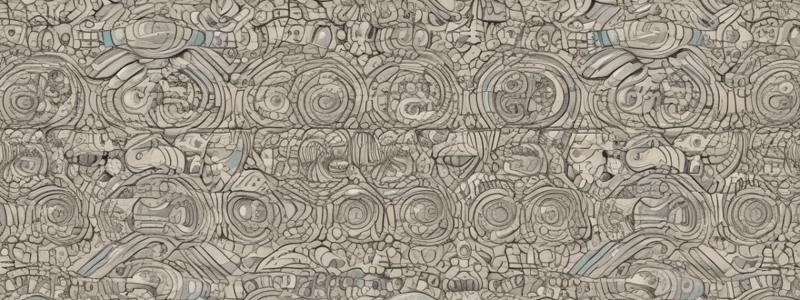Podcast
Questions and Answers
What is the primary issue with creating an exact copy of an object?
What is the primary issue with creating an exact copy of an object?
- Some of the object's fields may be private and not visible from outside of the object. (correct)
- The object's class is final.
- The object's class is unknown.
- The object has too many fields.
What is the main benefit of using the Prototype pattern?
What is the main benefit of using the Prototype pattern?
- It lets you clone an object without coupling your code to the class of that object. (correct)
- It is more efficient than other creational patterns.
- It reduces the number of classes in the system.
- It allows for subclassing without knowing the concrete class.
What is the common interface declared by the Prototype pattern?
What is the common interface declared by the Prototype pattern?
- An abstract class with a clone method.
- An interface with multiple methods.
- A factory method with a clone parameter.
- An interface with a single clone method. (correct)
What is an alternative to subclassing, according to the Prototype pattern?
What is an alternative to subclassing, according to the Prototype pattern?
Why is the implementation of the clone method similar in all classes?
Why is the implementation of the clone method similar in all classes?
What is the problem with directly copying an object's fields?
What is the problem with directly copying an object's fields?
What is a common use case for the Prototype pattern?
What is a common use case for the Prototype pattern?
What is an object that supports cloning called in the Prototype pattern?
What is an object that supports cloning called in the Prototype pattern?
What is the main purpose of the Prototype pattern?
What is the main purpose of the Prototype pattern?
What is the difference between the Prototype pattern and the Factory Method pattern?
What is the difference between the Prototype pattern and the Factory Method pattern?
What is the advantage of using the Prototype pattern?
What is the advantage of using the Prototype pattern?
What is the relationship between the Prototype pattern and the Builder pattern?
What is the relationship between the Prototype pattern and the Builder pattern?
What is the purpose of the clone() method in the Prototype pattern?
What is the purpose of the clone() method in the Prototype pattern?
How does the Prototype pattern handle object creation?
How does the Prototype pattern handle object creation?
What is the difference between an abstract factory and a prototype?
What is the difference between an abstract factory and a prototype?
What is the advantage of using an abstract factory?
What is the advantage of using an abstract factory?
What is the purpose of the Factory Method pattern?
What is the purpose of the Factory Method pattern?
What is the difference between the Factory Method pattern and the Abstract Factory pattern?
What is the difference between the Factory Method pattern and the Abstract Factory pattern?
Flashcards are hidden until you start studying
Study Notes
Problem
- Creating an exact copy of an object can be challenging due to private fields and class dependencies.
- The direct approach of copying an object's fields is not always possible, especially when the object's class is unknown.
Solution
- The Prototype pattern delegates the cloning process to the actual objects being cloned.
- It declares a common interface for all objects that support cloning, usually with a single
clonemethod. - The
clonemethod creates an object of the current class and copies all field values from the old object to the new one.
How it Works
- Pre-built prototypes can be an alternative to subclassing.
- You create a set of objects, configured in various ways, and clone them instead of constructing new objects from scratch.
Real-World Analogy
- The process of mitotic cell division is a closer analogy to the Prototype pattern, where the original cell acts as a prototype and takes an active role in creating the copy.
Pseudocode
- The Prototype pattern lets you produce exact copies of geometric objects without coupling the code to their classes.
- Cloning a set of objects that belong to a class hierarchy involves using a common interface and calling the
clonemethod on each object.
Key Concepts
- Prototype: an object that supports cloning.
- Cloning: creating an exact copy of an object.
- Polymorphism: the ability to call the
clonemethod on a shape without knowing its exact type, and the program checks its real class and runs the appropriate clone method.
Studying That Suits You
Use AI to generate personalized quizzes and flashcards to suit your learning preferences.




